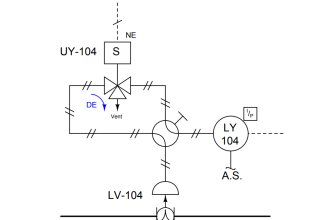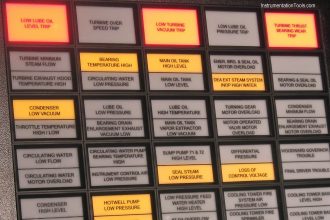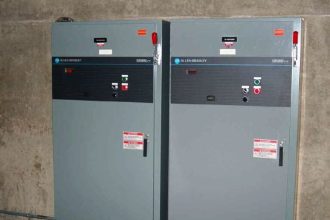Whenever you connect the power supply to the PLC for IO connection, care must always be taken for the correct potential. If the potential is not properly connected, then the IO will not give correct values with respect to the PLC. The two types of hardware connection used for IOs are sinking and sourcing. Basically, it deals with how to connect voltage to the field IO with respect to ground or common connection.
With this proper knowledge, you can complete the electrical circuit for working. Many times, an engineer gets confused as to what type of connections should be applied for correct circuitry and working. In this post, we will explore which is the most preferred type of connection in PLC – sinking or sourcing. Note that this concept only applies to digital IO’s, and not analog IO’s, which we will see later in the post.
Sinking input module in PLC
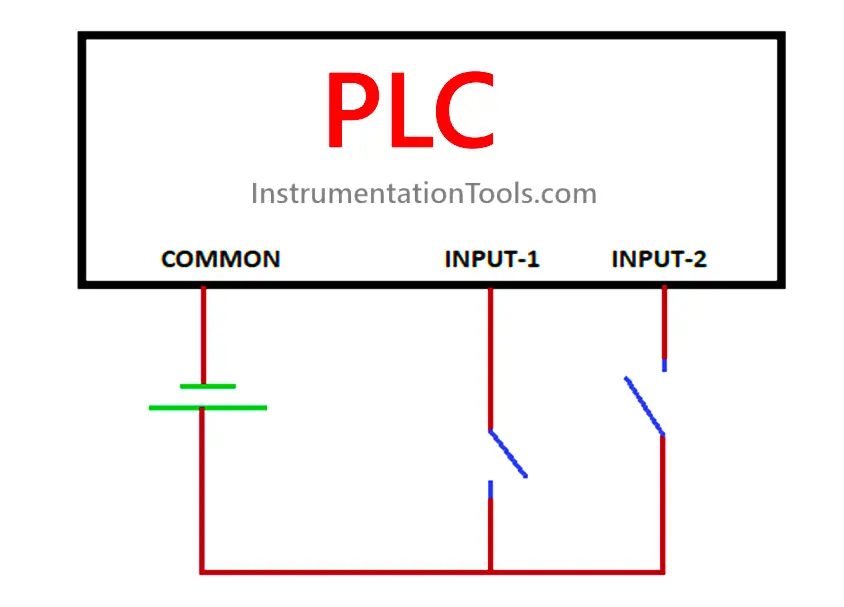
As we know, to complete an electrical circuit, both the negative and positive points of the load must be connected and not opened. PLC digital inputs have a common point, which passes the voltage potential connected to it to the internal circuitry. So, in the first case, if the common is connected to a negative potential, then to complete the circuit, a positive potential is given from outside to the field device, and then returned back to the input. When the field device closes, the circuit completes and a voltage will now be present between the load points of input and common. It is called sink connection because positive potential is given to the field devices from an outside source.
Sourcing input module in PLC
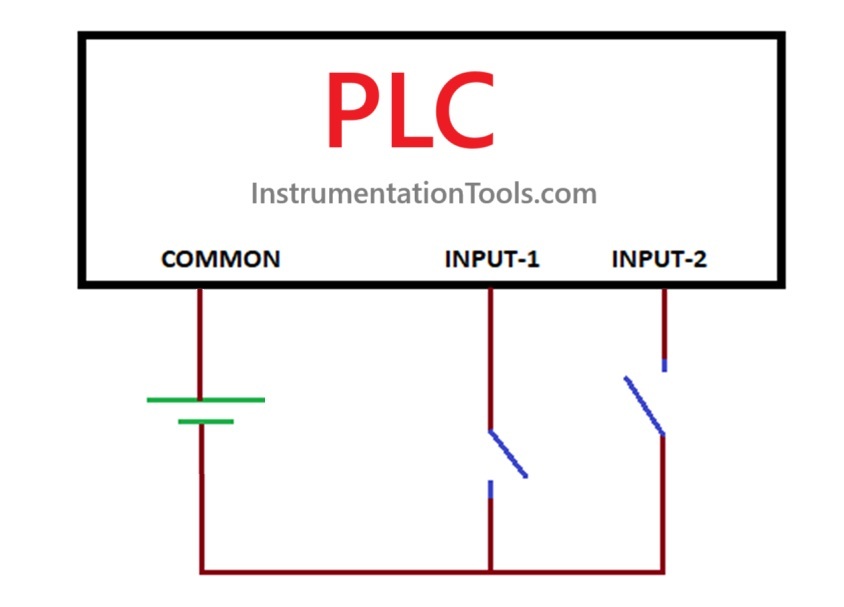
In the second case, if the common is connected to a positive potential, then to complete the circuit, a negative potential is given from outside to the field device, and then returned back to the input. When the field device closes, the circuit completes and a voltage will now be present between the load points of input and common. It is called source connection because positive potential is given to the field devices from PLC only.
Sinking output module in PLC
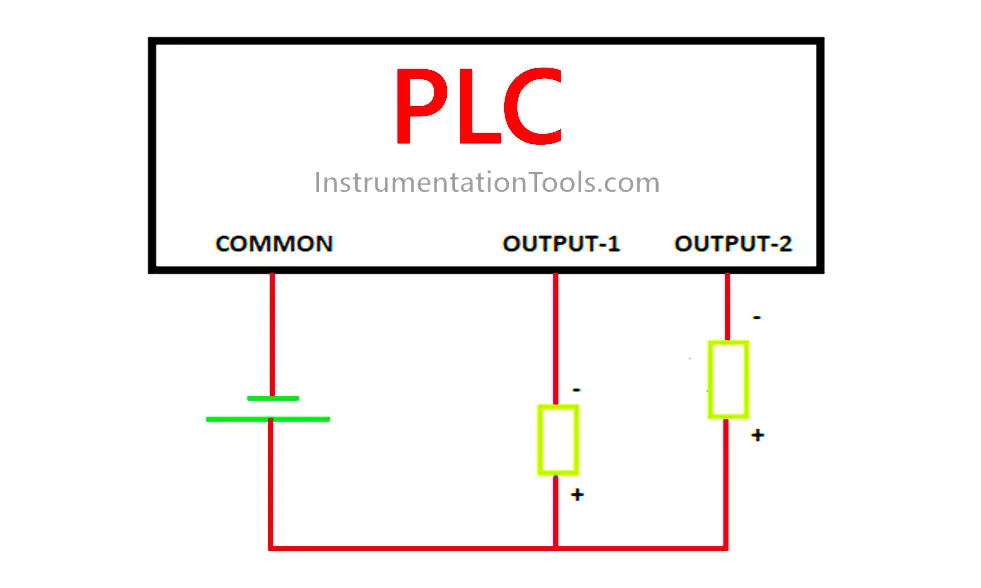
As we know, to complete an electrical circuit, both the negative and positive points of the load must be connected and not opened. PLC digital outputs have a common point, which passes the voltage potential connected to it to the internal circuitry. So, in the third case, if the common is connected to a negative potential, then to complete the circuit, positive potential is given from outside to the field device, and then returned back to the output. When the PLC output closes internally, the circuit completes and a voltage will now be present between the load points of output and common. It is called sink connection, because positive potential is given to the field devices from an outside source.
Sourcing output module in PLC
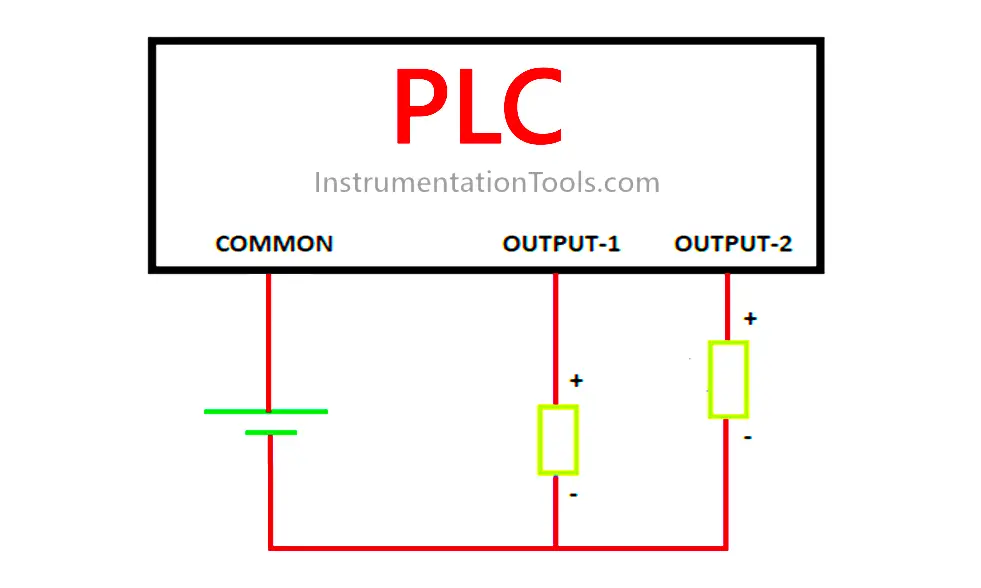
In the fourth case, if the common is connected to a positive potential, then to complete the circuit, negative potential is given from outside to the field device, and then returned back to the output. When the PLC output closes internally, the circuit completes and a voltage will now be present between the load points of output and common. It is called source connection, because positive potential is given to the field devices from the PLC itself.
Design considerations in sinking and sourcing in PLC
Now, this is a difficult concept on which type of connection is best preferable for PLC. But, we will try to simplify by breaking it down into some points to consider, which will make our task easier.
- We wire digital inputs for two types of field devices – PNP and NPN. PNP devices give current to the load from a source when closed, whereas NPN devices take current from the load to the ground when closed. So, if your device is PNP, then you will require a sinking connection, whereas NPN devices will require a sourcing connection. The same concept applies to digital outputs.
- Imagine a scenario where you use a sourcing connection. In that case, a negative potential is flowing in the panel for the field devices. Suppose a certain negative wire accidentally touches the ground. In that case, the circuit will be closed and PLC will consider it as input or output, which is actually false. So, for areas where grounding is critical, sinking connections are most preferred. This will ensure that no false signals are generated with respect to the PLC.
- Sinking and sourcing connection requirements vary from country to country. So, some will consider sinking as their standard connection, while some will consider sourcing as their standard connection. Sourcing too has it’s own advantage – only common wire will have 24V. It will not flow outside the panel, as 0V will flow outside for connecting with the field devices and then return to the PLC.
In this way, we saw that choosing between sinking and sourcing depends on the criticality factor, application and the country where it is resided.
Read Next:
- Example of PLC Timer Programming
- Motion Detection based PLC Street Light
- Traffic Lights Ladder Diagram using Timers
- Elevator Control Programming Example
- PLC 2 Push buttons to Control 1 Output
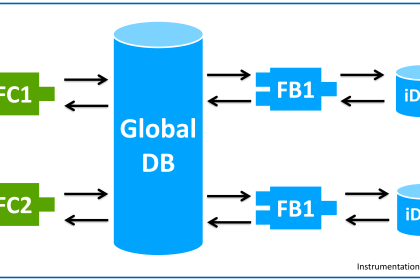
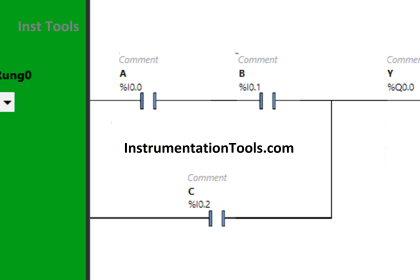
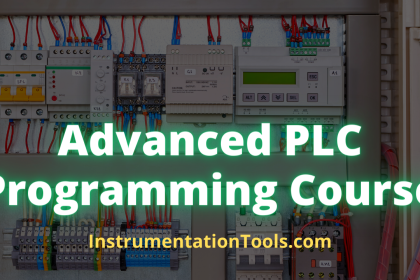
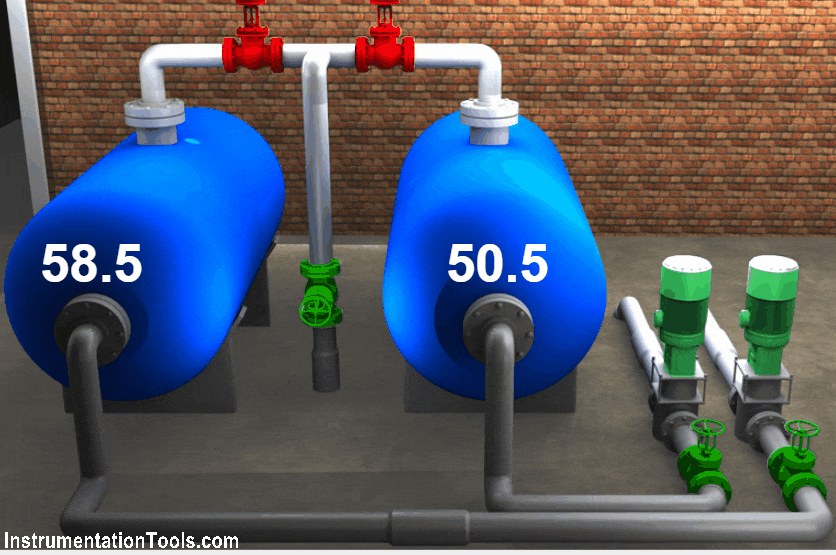
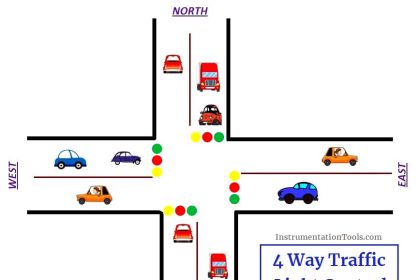
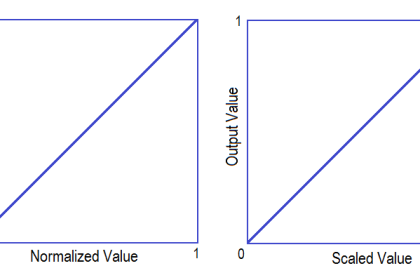
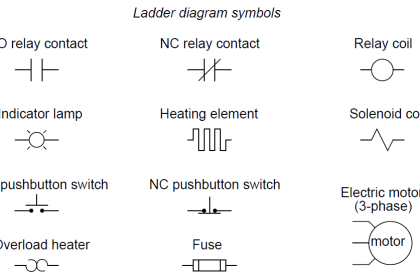
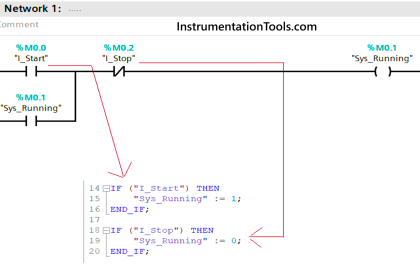

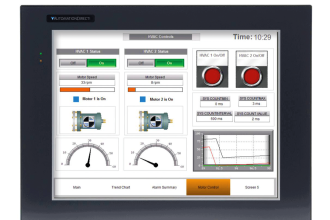

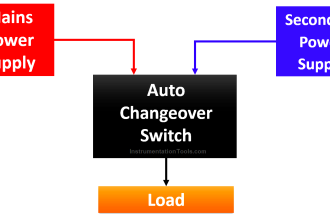
![Multi-Tank Liquid Level Control System with Fill Priority [PLC]](https://instrumentationtools.com/wp-content/uploads/2025/07/Multi-Tank-Liquid-Level-Control-System-with-Fill-Priority-PLC-330x220.jpg)
